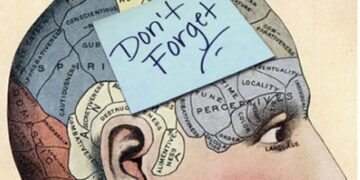By: Mohmod Irfan Shah
Our lives begin to end, the day we become silent about things that matter-Martin Luther King, Jr.
Harassment is any behaviour that makes another person feel uneasy. It is possible to encounter it in both public and private spaces while harassment of women is a global problem that affects women in every country. Sexual harassment is considered to be the most prevalent form of harassment experienced by women, but there are more types of it being neglected which include psychological, sexual orientation, online, workplace, verbal, and even visual Harassment.
The tragedy is that women have never been more unsafe in online and offline spaces than now in the age of technology that has made online mode of communication a part of our lives. Right after the surfacing of The Covid19, online mode of communication became even more prominent as several businesses as well as other sectors chose to adopt ‘work from home’ scenario. The restrictions led nearly all of us to stay indoors and in the absence of physical interactions as well as outings, most of us went online to not just work but find friends, entertainment and share stories with each other. This also meant that harassers would be noting all such activities and does what they are best at- Harassment!
Take for instance the recent controversy in which the “Sulli Deals” app had triggered widespread outrage as it had put out details of more than 100 prominent Muslim women, allowing users to participate in an “auction” of those women. The accused was arrested by the Delhi Police’s Special Cell from Indore in Madhya Pradesh earlier this month. The “Bulli Bai” app too targeted Muslim women by putting them up for an “auction”.
A majority of us might have heard about such stories on various social media platforms or news outlets about the harassment of women, as well as young girls. My personal interest to know more about harassment led me to conduct an online survey via Google form in this matter and to my utter astonishment, I, within a target audience of around forty young girls from age 18 to 24, found an alarming percentage of respondents claiming to have been harassed or eve-teased at least once in their life.
The key take-away points from my short survey includ:
- There is no specific age group of harassers; they belong from the tender age of 12 to the dotage of 70, or shockingly less or more than that.
- People around the victim didn’t react most of the times, either they didn’t notice, or they just didn’t care as the victim who was being harassed didn’t belong to their family or friend circle.
- The victim of the harassment preferred to stay quiet fearing that the society might point fingers towards her character or blame her for the same or they were just worried about the family reputation.
- Harassers can be from your locality, friend circle, school, workplace, relatives, or anyone from the general public or even someone who nobody can ever doubt, judging based on looks.
- Harassment cases come from online gaming platforms, Social media platforms, public places, workplaces, and homes.
The victims’ silence is one of the main causes which is taken as a green signal by the harasser. When a woman is the victim, she usually keeps her feelings to herself. In public buses or trains, she may leave or change her seat, and a very few object. Even if she does raise an alarm, the odds of her being rescued are slim. Women are raised to tolerate and accept the deep-seated patriarchy. Even the elderly seldom expect a change in their favour and presume the situation would remain unchanged. It is deplorable to be in a society where harassment and eve-teasing are common.
Girls are generally pushed behind the veil, especially in rural regions. They are conditioned not to speak about their concerns or opinions. The terrible reality of poverty makes them stay in the conditions of unease for the purpose of pleasing the community. Knowing the fact that the harasser is the one who needs to change his behaviour, his acts, his approach, we still stop victims from living their life.
So many crimes are committed every day; does that mean we hide in our homes and stop living our lives thinking that we might become a target for someone too? The offender should be afraid, not the victim. Instead of punishing and stopping a harasser from doing such mischievous acts and educating our society about the right kind of behaviour, we control the victims of harassment by refraining them from wearing a dress of their choice, using social media platforms or going out alone with friends.
Women endure a huge amount of online harassment in the current scenario due to their gender identification. However, online abuse based on gender is not well recognised. Social media platforms and online gaming platforms are the major mediums for gender-based online harassment. The effect of such acts on women can be damaging to both their personal life and career.
Digital harassment limits women’s capacity to participate in online activities like gaming, social media, or even online classes on equal ground with men. While women may be able to discuss their experiences in private forums online using Hashtags. Women who publicly oppose male social domination are constantly suppressed. But, I firmly believe that despite the pain that internet harassment causes, women have the capacity to defend themselves and their careers from unlawful persons.
Harassment has a substantial psychological as well as physical and observable impact on the victim, including anxiety, loneliness, headaches, sleep difficulties, low self-esteem, and even depression. It is important to recognise the signs of harassment if you suspect that anyone you know is being harassed. The primary indicator is discomfort and any inappropriate physical, visual, verbal, or emotional contact. If your ‘no’ has no effect and you are subjected to sexual or unwanted jokes, you are being sexually harassed.
There are many provisions and laws against harassment, such as POSH Law, Sec 503 IPC, and Sec 67 IT Act, but laws cannot bring mental change as changes are needed in the mentality of the individuals living in the society, not only in the form of laws.
As reported by The Economic Times, #MeToo: A survey says nearly 80% of women never report harassment, indicating a flawed redressal system despite the Vishakha Guidelines and the Sexual Harassment of Women at Workplace (Prevention, Prohibition, and Redressal) Act, 2013 enacting rules on the issue.
A fundamental condition for implementing any law in the society that benefits women is a change in people’s attitudes. Through the act of standing up for the helpless without being judgmental but with empathy, we can strengthen innocent people’s willpower to fight for themselves. Justice has the greatest chance of reaching every corner of the earth if laws are appropriately implemented and enforced. We must fight back against the shame associated with our patriarchal society and punish the harasser, not the victim.
The writer is a student pursuing B.E Civil Engineering at SSM College of Engineering.
Email: mirfanshah919@gmail.com






